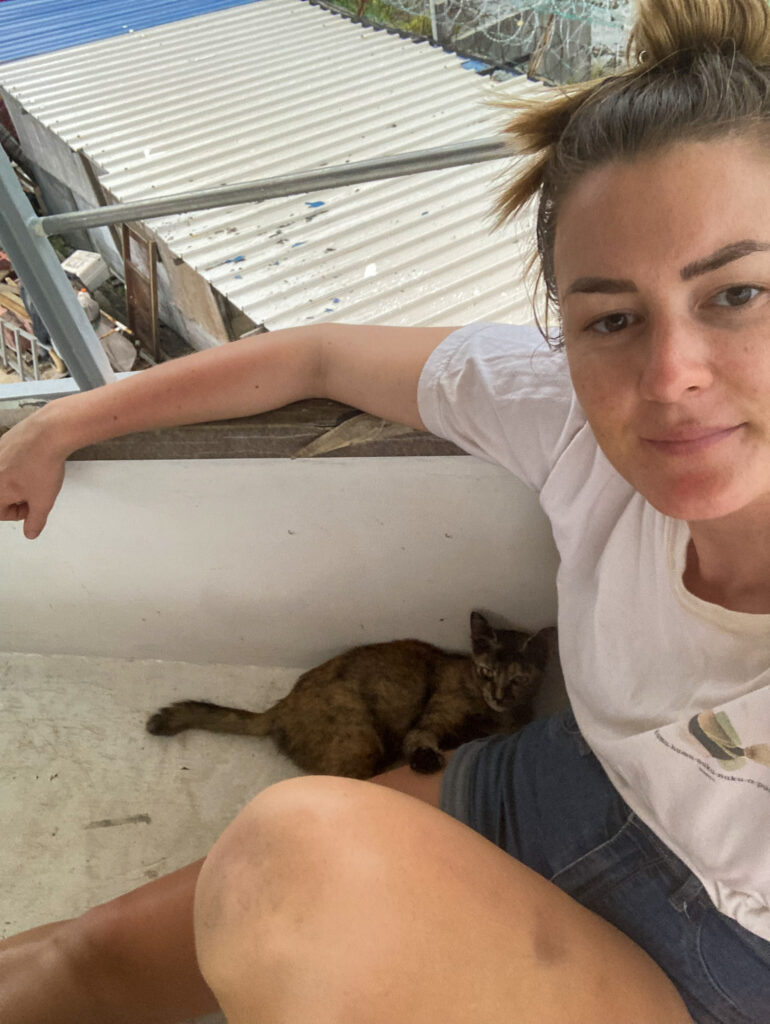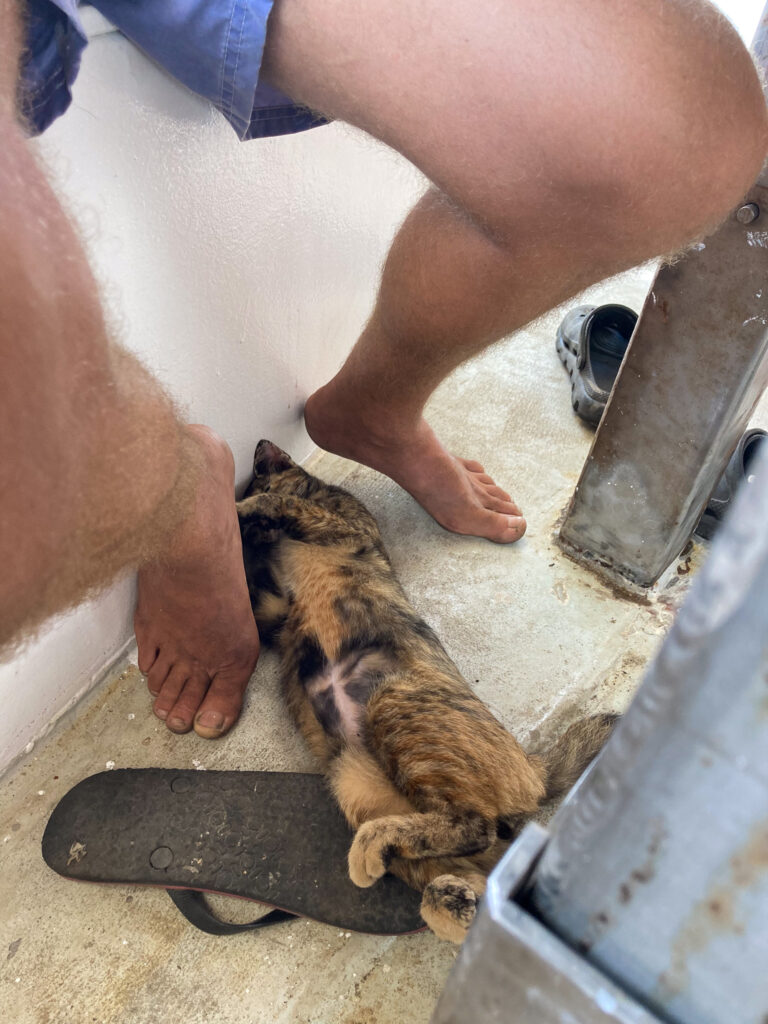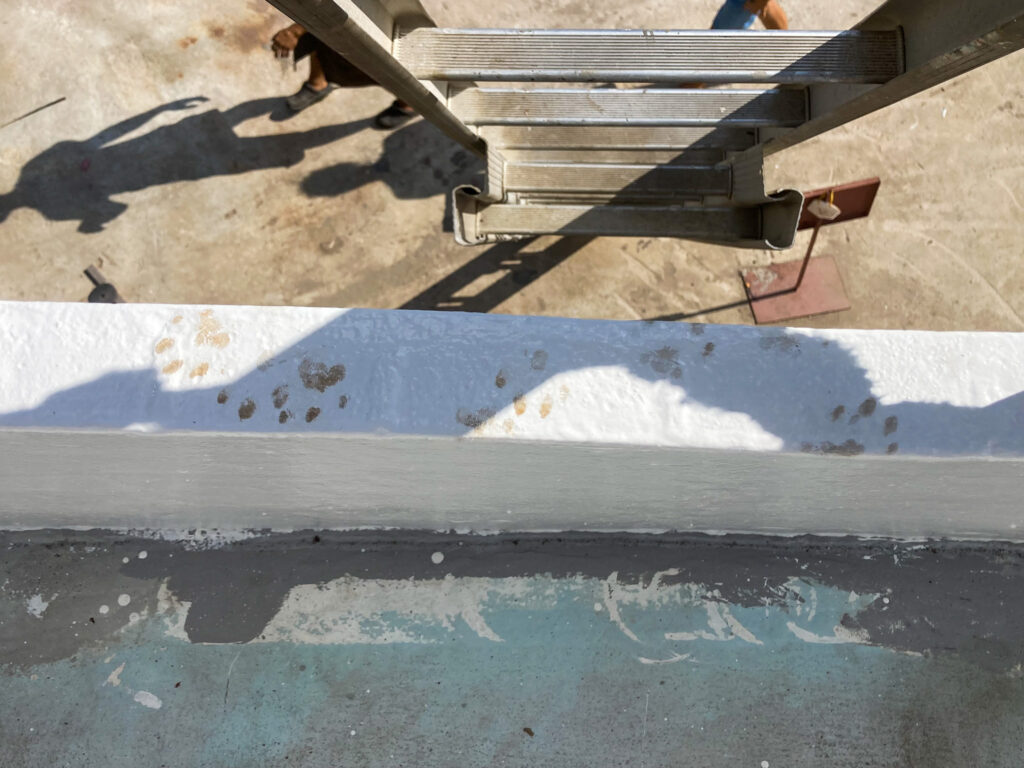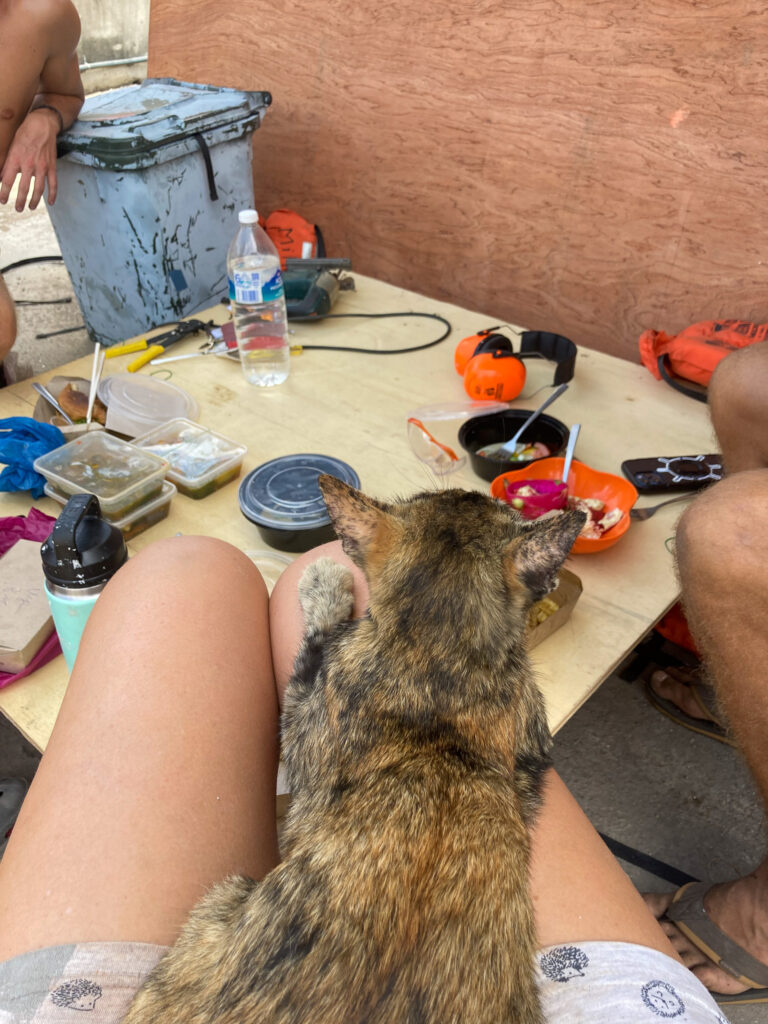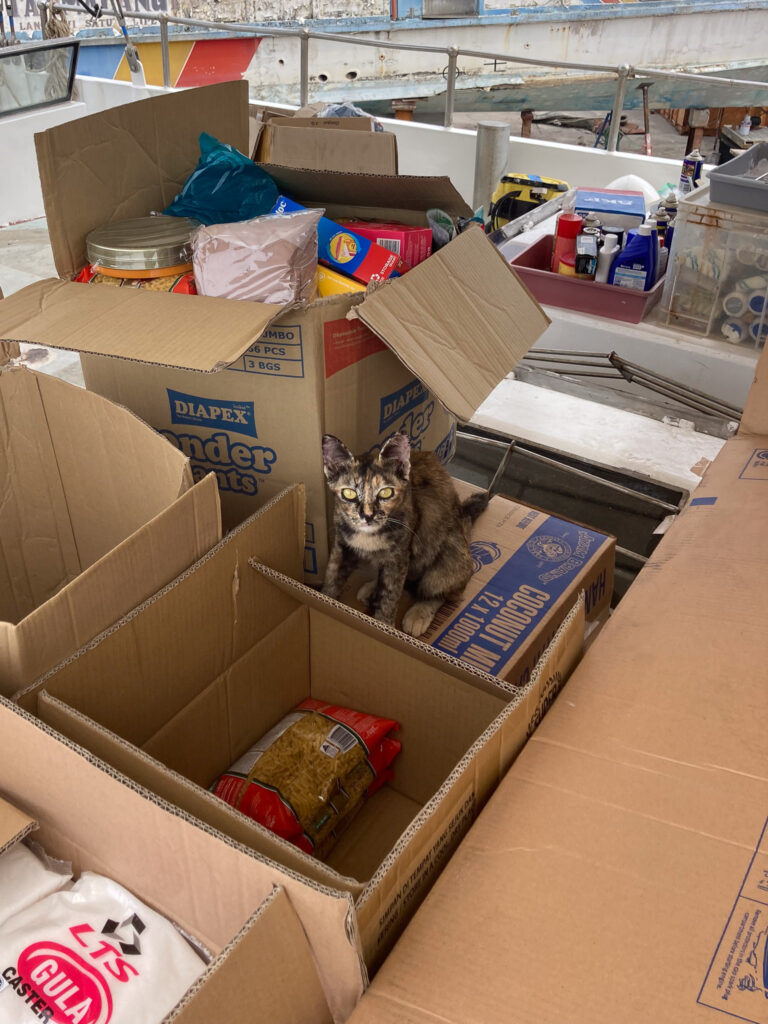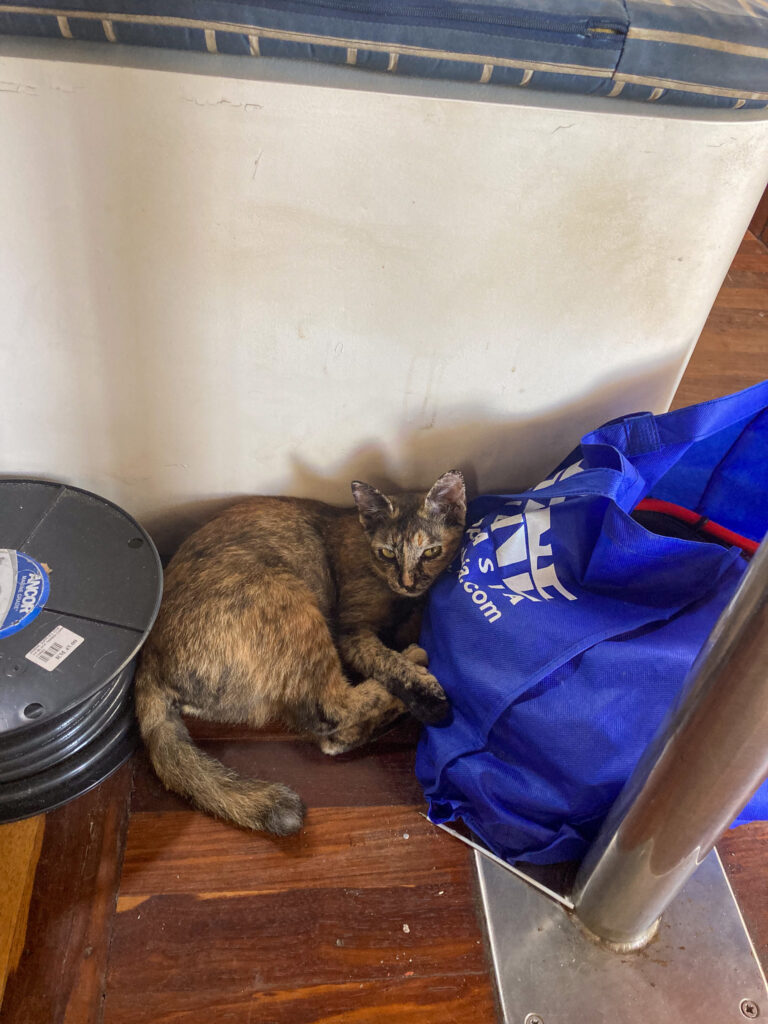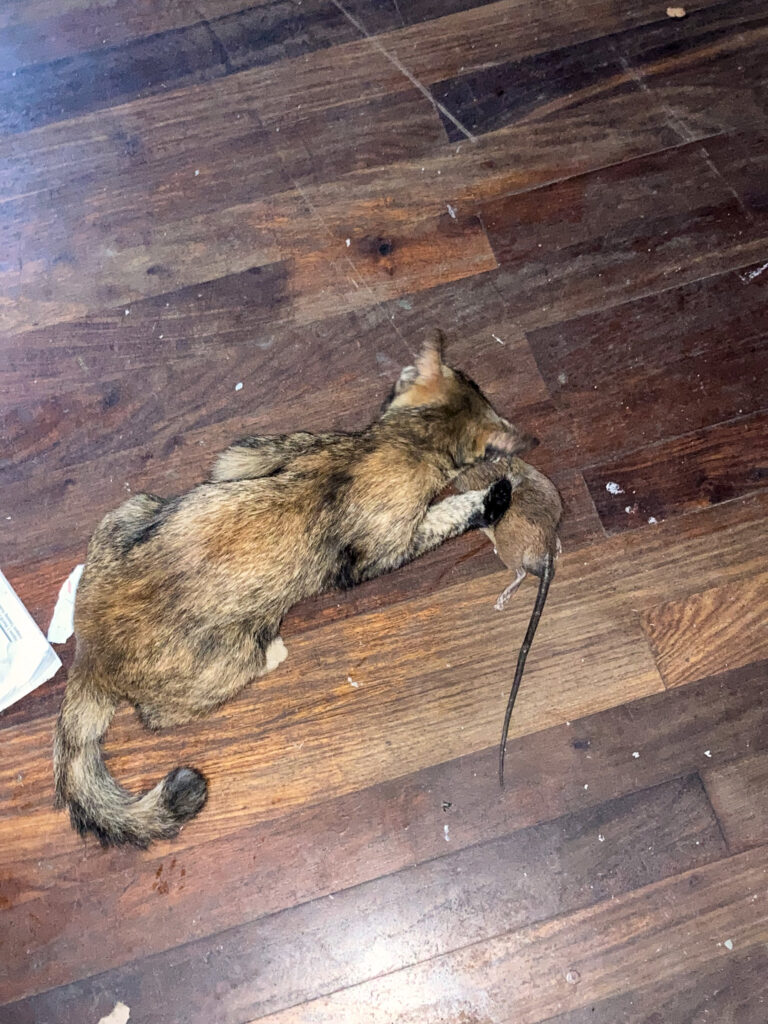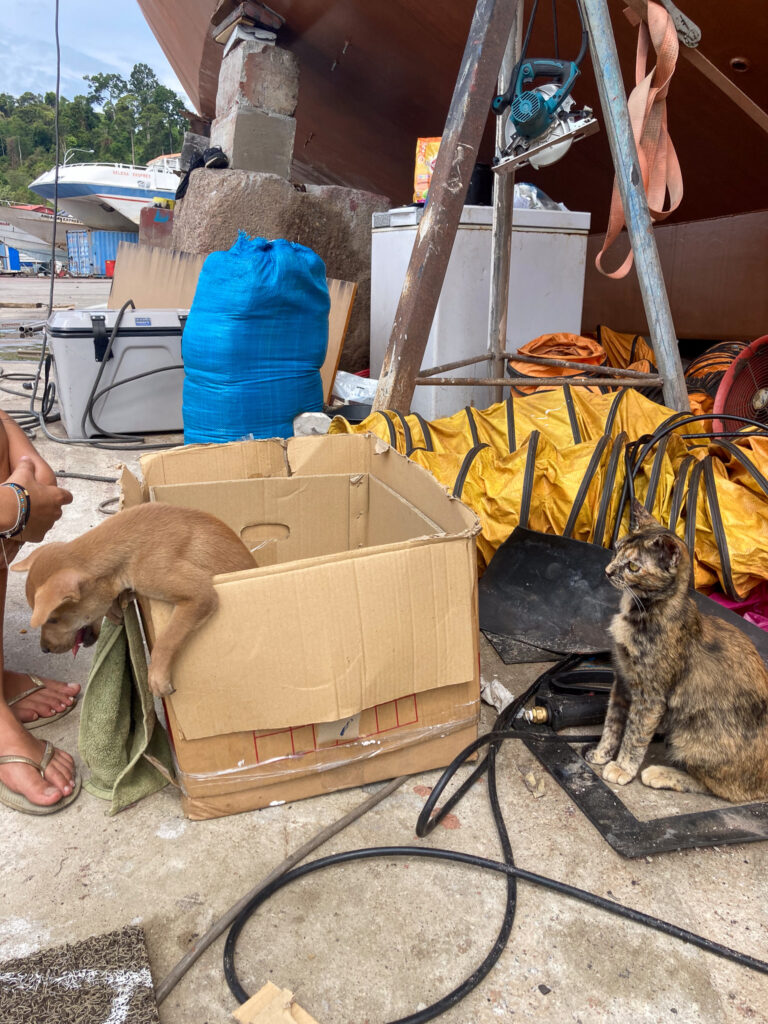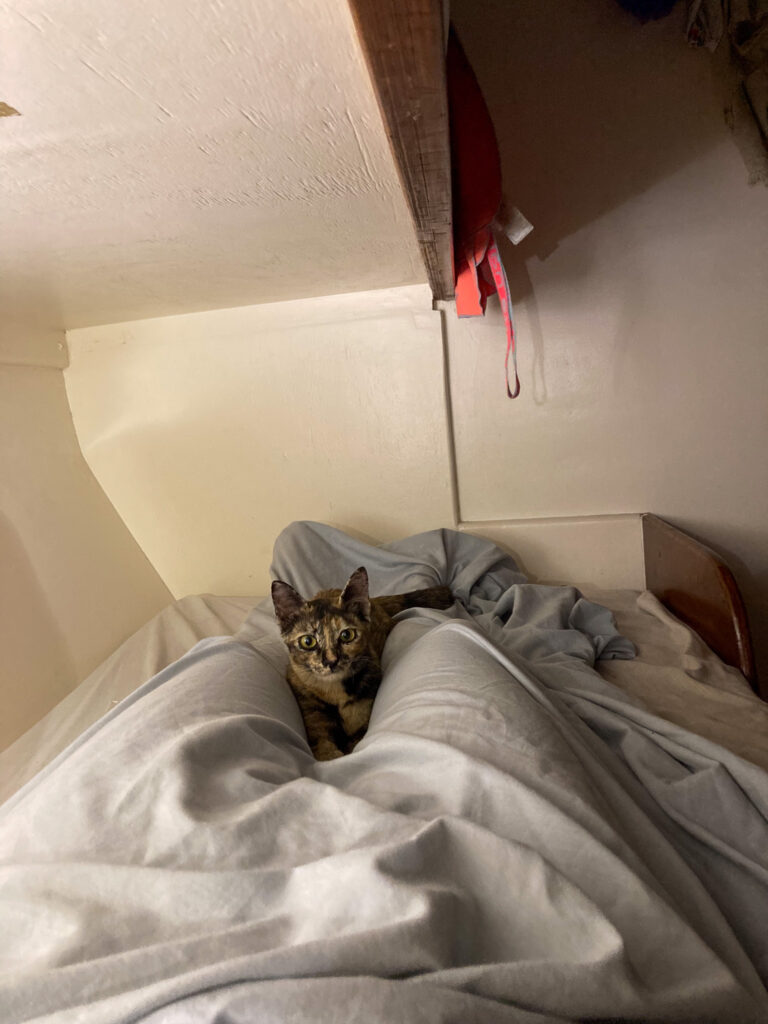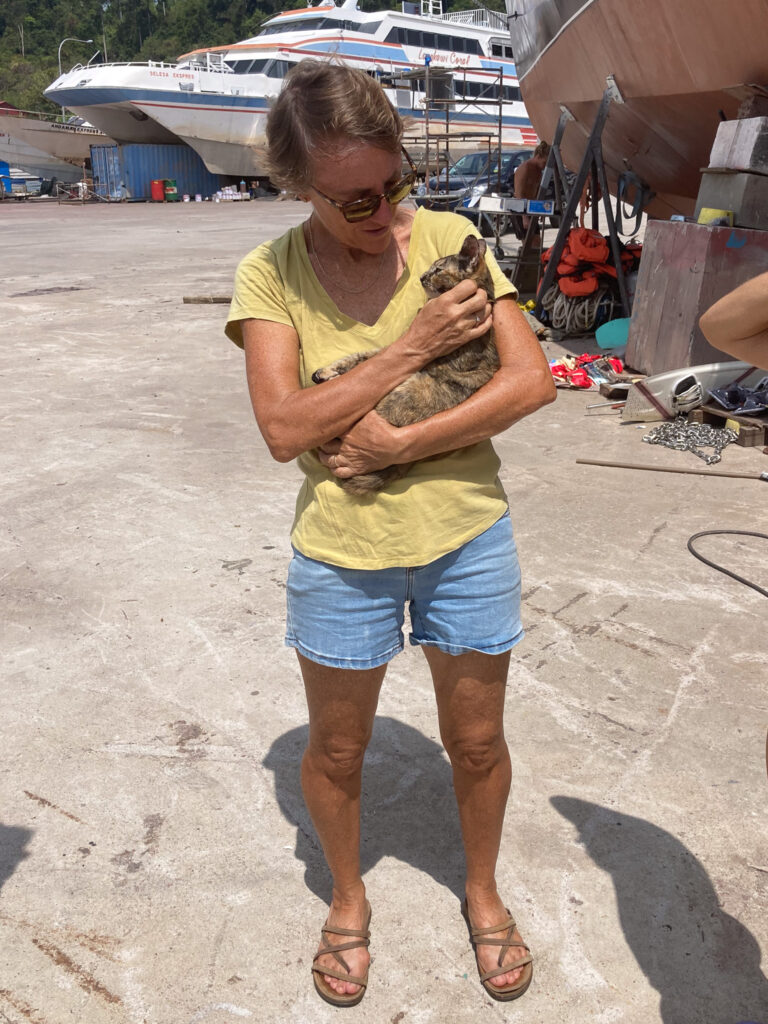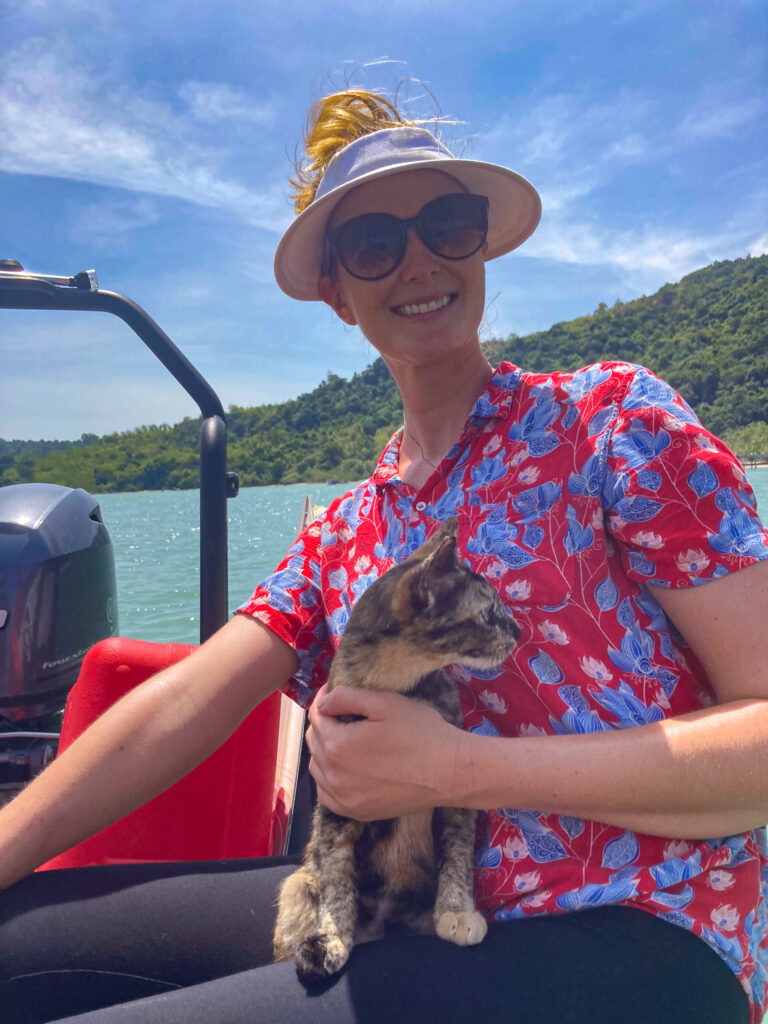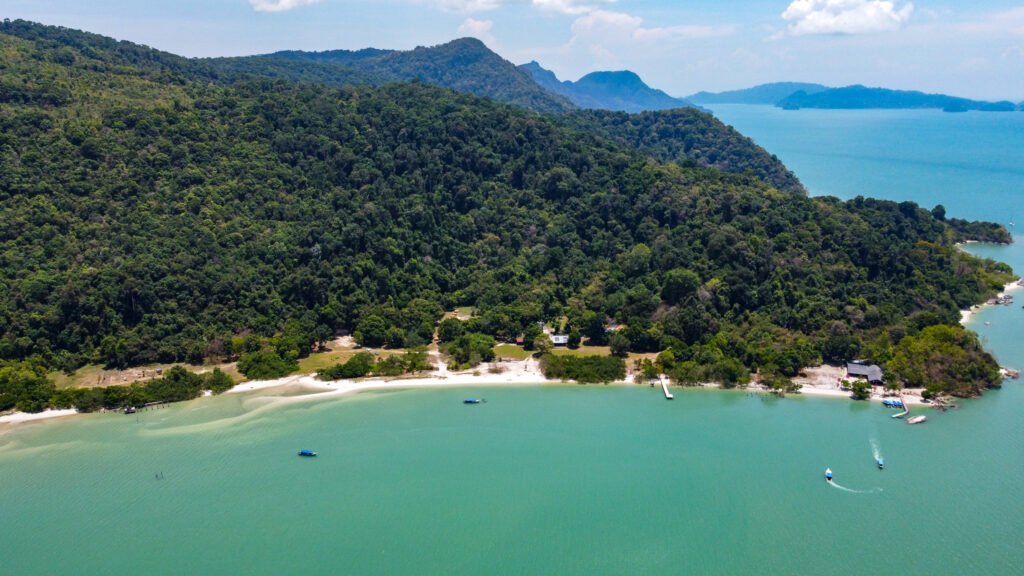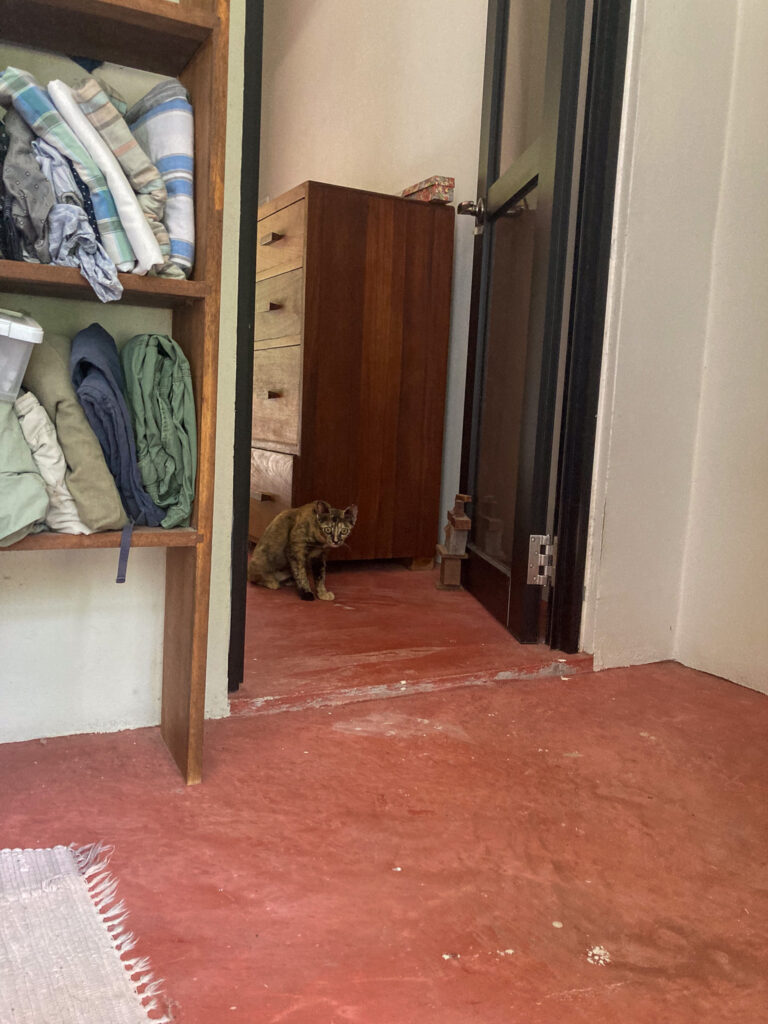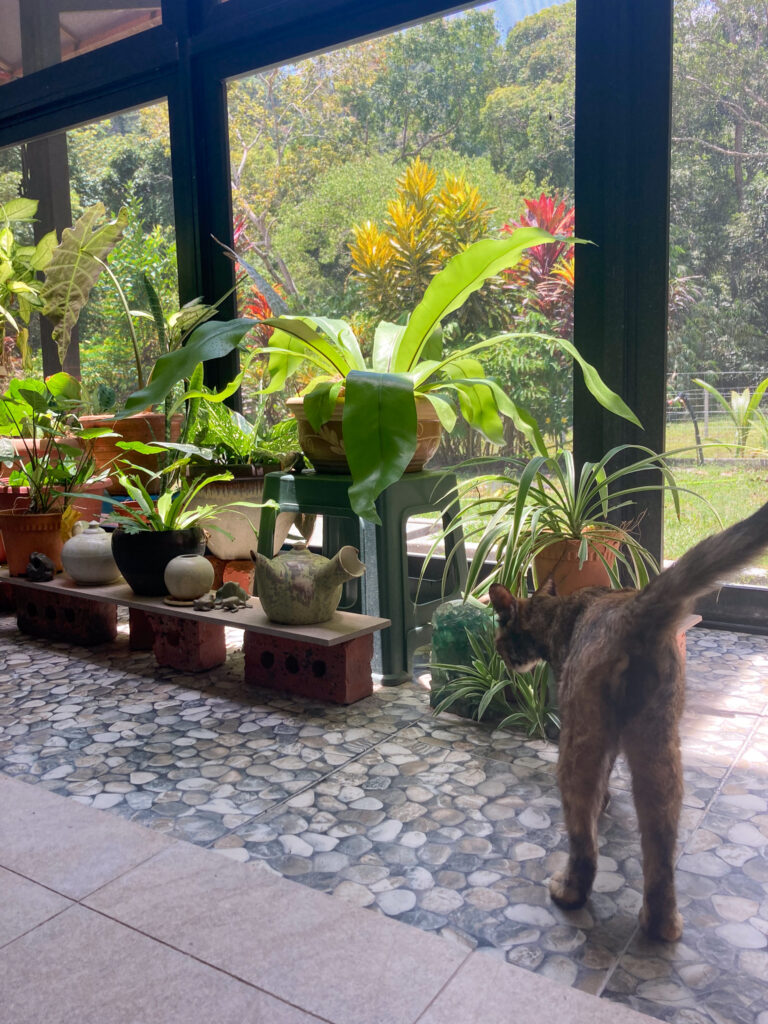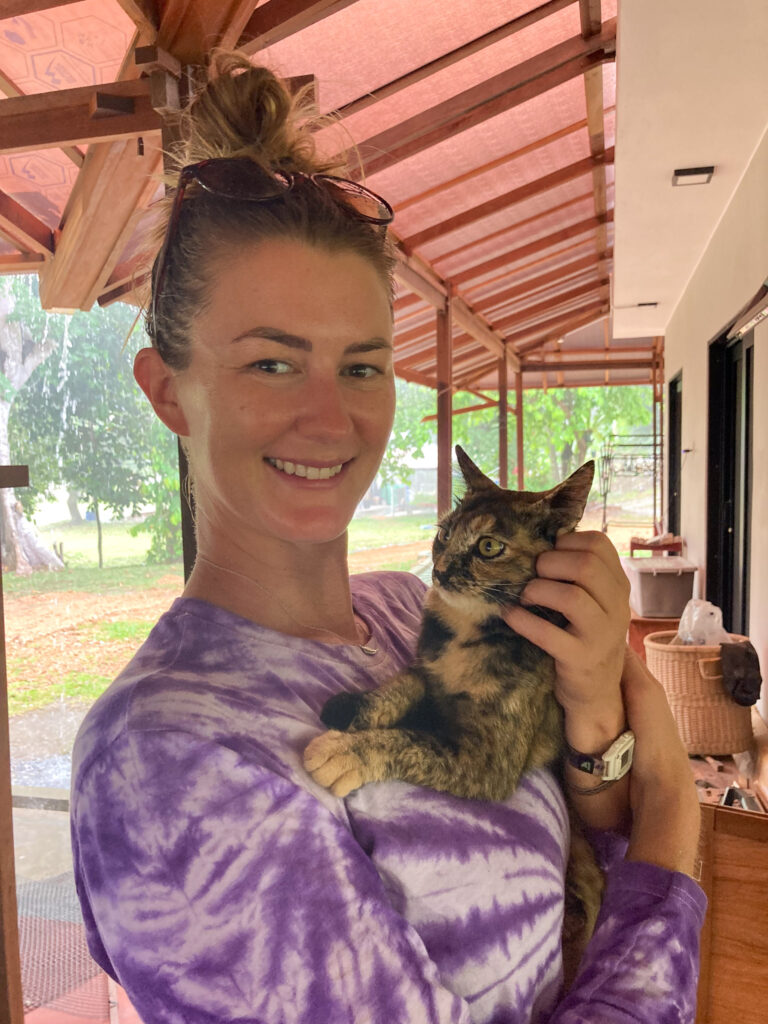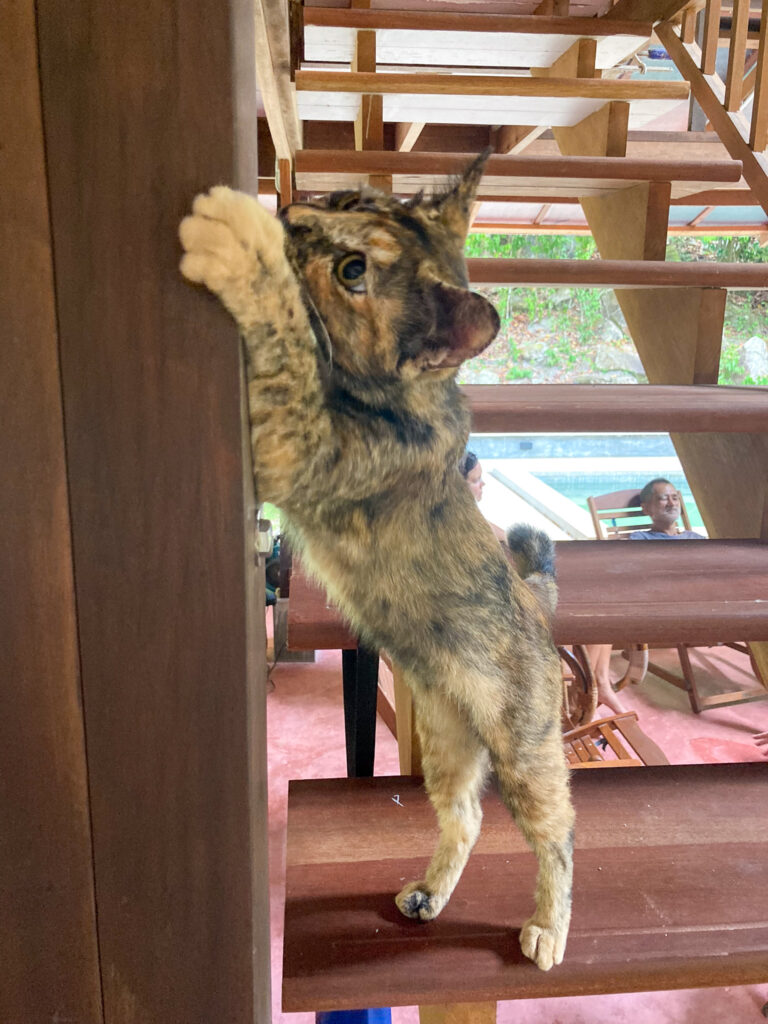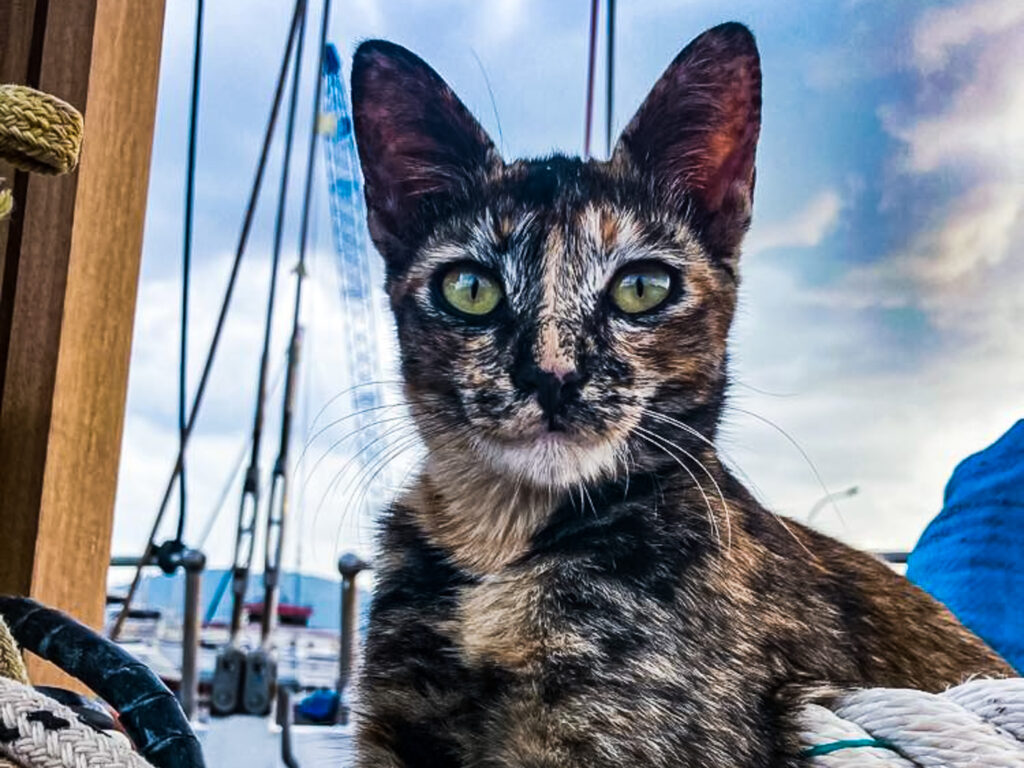Shortly after I arrived on SV Millennium, I discovered the boat had been adopted by a little stray kitten. We named the kitten Milli (short for Millennium) and she quickly made her way into all of our hearts. She was a mixture of black and orange with a knobby, cropped tail typical of inbred island cats in Southeast Asia. Given her size, I estimated she was about 9 months old but quite skinny and malnourished.
Every day she climbed the latter up into the boat and typically showed up around lunchtime, hoping we would share any leftovers with her even though it was vegetarian food. Occasionally I saw her begging the shipyard workers for food but it was clear that nobody was looking after her. She was great at manipulating people and knew that the more obnoxious and cute she was, the more food she could get. Eventually, we started buying her sardines and then transitioned to actual cat food.
As she gained a little weight and we began giving her regular food, she started coming around more and more. She became cuter and more playful, giving us a break from the regular boat activities. She would play with everything, race up and down the deck, and cuddle with us during a post-lunch snooze. It was clear that we were becoming more and more dependent on each other.
Since the boat was headed to Australia, giving her a long-term home on SV Millennium wasn’t an option. Australia already has issues with domesticated cats and wildlife leading them to have strict and expensive importation and quarantine requirements. Since she couldn’t come with us, I figured the next best thing would be to get her spayed and vaccinated and set her up for a better life than she would have had before us.
I got a few different quotes from veterinarians around the island and asked everyone onboard if they would be interested in splitting the costs at around $10 per person. I was shocked when I got some pushback from a few members of the crew. One person even asked, “What if Milli wants to be a mom? How could we take away her reproductive rights?”. I couldn’t believe some people had this mentality and it made me question if what I was doing was best for her. After she came into heat and I saw her being chased by several male cats around the shipyard, I knew I needed to intervene.
I brought Milli into the vet for her appointment and the veterinarian said she looked completely healthy and was relieved to her that her growing belly was more likely from getting fatter than being pregnant. I left her there for about a week to have the procedure done and recover in a clean and sterile environment. She also received a full round of vaccines and treatment for worms and fleas.
When Milli originally started coming on board, we had a rule to not let her inside. Then, we changed the rule to say she wasn’t allowed downstairs. Then, she was allowed downstairs but not in any of our beds. But, as soon as she was clear of fleas and worms she began sleeping with all of us. Milli would often hop in my bunk first for about an hour, then hop up to Amy’s bunk, then move her way systematically to sleep with each of us throughout the night.
The more time Milli spent onboard, the more my heart sank thinking about leaving her behind. I briefly looked into how to import her to the US but that would be another expensive and complicated process, not to mention the stress it would put her through. Even though I hated being in the shipyard, I became more and more content spending time there if it meant we could care for her a little longer.
One day I thought of making a short video that would showcase her playful and loving personality and post it to a local Facebook group. I kept my fingers crossed that the right home would find her and about a day later, I received a message from a woman named Lisa. Lisa lived on an island across from the shipyard, on a homestead with her husband, sheep, dogs, and two cats. I couldn’t imagine a better home! I made plans with Lisa for her to come to meet Milli but she wasn’t prepared to take her that day since she was leaving for a couple weeks. Instead, we coordinated with Lisa’s husband to drop Milli off in a few days once the new tender for SV Millennium had arrived.
When the day came, we loaded up Milli into a pet carrier and motored 10 minutes across the way to Lisa’s dock. Her husband Jimmy greeted us and gave us a tour of the property. They lived on a 10-acre farmstead with no roads and were completely off-grid. Most of the island is covered in the jungle except for the area around the house and a few of the sheep pastures that were being used as obstacle courses for the show Survivor!
Jimmy and I closed up the house to create a space to release Milli and keep her contained for her first few days in her new home. She hesitantly left the crate to begin exploring but shut down once she saw the other cats. She spent the rest of the day hiding under the bed and I hoped she would, one day, understand what we had done for her.
Jimmy asked what kind of food she preferred since he normally cooks fresh fish for the cats daily. Having grown up in a concrete shipyard eating rats and people food, I’m sure the fresh fish, grass, and trees would be a whole new world for her. In all honesty, I couldn’t have imagined a better place for a cat to call home.
We returned to the property two weeks later to have lunch with Lisa and Jimmy and to see how Milli had adapted to her new home. Since the other two cats were primarily indoors, she claimed the outdoor living area as her territory. I was surprised to see her getting along with the dogs so well considering they used to be a constant threat to her in the shipyard. Lisa said that Milli was quite the explorer and had seen her down in the workshop and sheep’s house. I hope that one day, I will see her running in the background of Survivor!
We stayed for lunch and after we were done eating, Milli hopped up on my lap and stayed there sleeping for the rest of our visit. I could not imagine a better home for this little kitty and am forever grateful that Lisa was able to give her a good home.
